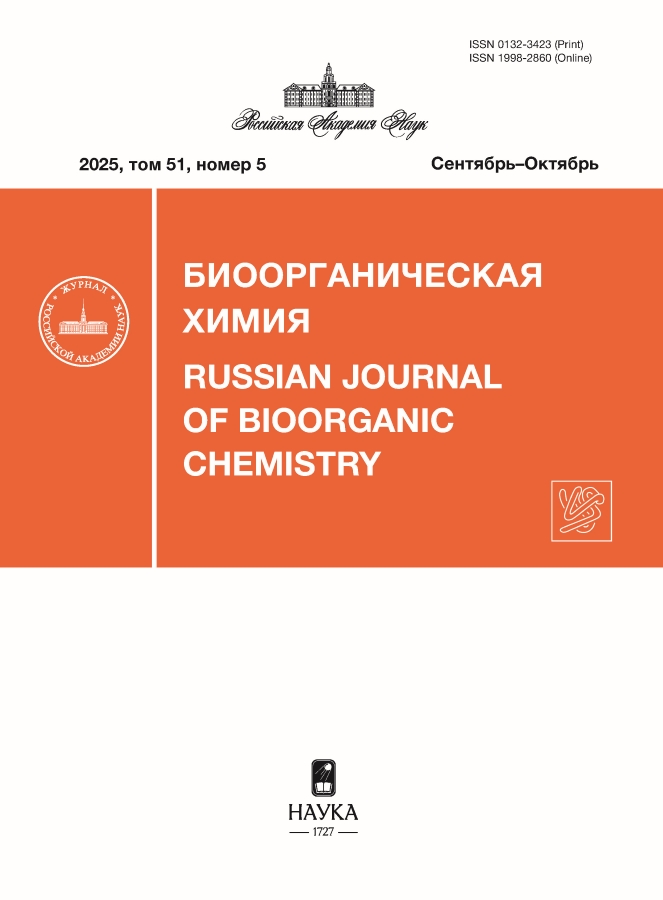Development of an Experimental Intracranial PDX Model of Human Glioblastoma in NSG Mice
- Autores: Antipova N.V1, Bondarenko D.A1, Mazur D.V1, Isakova A.A1,2, Gasparian M.E1, Patsap O.I3, Pavlov V.M1, Mikhailov E.S1, Goryacheva N.A1, Rzhevsky D.I1, Semushina S.G1, Dolgikh D.A1,2, Murashev A.N1, Yagolovich A.V2
-
Afiliações:
- Shemyakin-Ovchinnikov Institute of Bioorganic Chemistry of Russian Academy of Sciences
- Lomonosov Moscow State University
- Federal Center for Brain and Neurotechnology of the Federal Medical and Biological Agency of Russia
- Edição: Volume 51, Nº 5 (2025)
- Páginas: 892-898
- Seção: ЭКСПЕРИМЕНТАЛЬНЫЕ СТАТЬИ
- URL: https://gynecology.orscience.ru/0132-3423/article/view/695716
- DOI: https://doi.org/10.31857/S0132342325050141
- ID: 695716
Citar
Texto integral
Resumo
Palavras-chave
Sobre autores
N. Antipova
Shemyakin-Ovchinnikov Institute of Bioorganic Chemistry of Russian Academy of SciencesMoscow, Russia
D. Bondarenko
Shemyakin-Ovchinnikov Institute of Bioorganic Chemistry of Russian Academy of SciencesMoscow, Russia
D. Mazur
Shemyakin-Ovchinnikov Institute of Bioorganic Chemistry of Russian Academy of SciencesMoscow, Russia
A. Isakova
Shemyakin-Ovchinnikov Institute of Bioorganic Chemistry of Russian Academy of Sciences; Lomonosov Moscow State UniversityMoscow, Russia; Moscow, Russia
M. Gasparian
Shemyakin-Ovchinnikov Institute of Bioorganic Chemistry of Russian Academy of SciencesMoscow, Russia
O. Patsap
Federal Center for Brain and Neurotechnology of the Federal Medical and Biological Agency of RussiaMoscow, Russia
V. Pavlov
Shemyakin-Ovchinnikov Institute of Bioorganic Chemistry of Russian Academy of SciencesMoscow, Russia
E. Mikhailov
Shemyakin-Ovchinnikov Institute of Bioorganic Chemistry of Russian Academy of SciencesMoscow, Russia
N. Goryacheva
Shemyakin-Ovchinnikov Institute of Bioorganic Chemistry of Russian Academy of SciencesMoscow, Russia
D. Rzhevsky
Shemyakin-Ovchinnikov Institute of Bioorganic Chemistry of Russian Academy of SciencesMoscow, Russia
S. Semushina
Shemyakin-Ovchinnikov Institute of Bioorganic Chemistry of Russian Academy of SciencesMoscow, Russia
D. Dolgikh
Shemyakin-Ovchinnikov Institute of Bioorganic Chemistry of Russian Academy of Sciences; Lomonosov Moscow State UniversityMoscow, Russia; Moscow, Russia
A. Murashev
Shemyakin-Ovchinnikov Institute of Bioorganic Chemistry of Russian Academy of SciencesMoscow, Russia
A. Yagolovich
Lomonosov Moscow State University
Email: yagolovichav@my.msu.ru
Moscow, Russia
Bibliografia
- Das J.K., Das M. // Handbook of Animal Models and its Uses in Cancer Research. 2023. P. 503–526. https://doi.org/0.1007/978-981-19-3824-5_26
- Muldoon L.L., Alvarez J.I., Begley D.J., Boado R.J., Del Zoppo G.J., Doolittle N.D., Engelhardt B., Hallenbeck J.M., Lonser R.R., Ohlfest J.R., Prat A., Scarpa M., Smeyne R.J., Drewes L.R., Neuwelt E.A. // J. Cereb. Blood Flow Metab. 2013. V. 33. P. 13–21. https://doi.org/10.1038/jcbfm.2012.153
- Larionova T.D., Bastola S., Aksinina T.E., Anufrieva K.S., Wang J., Shender V.O., Andreev D.E., Kovalenko T.F., Arapidi G.P., Shnaider P.V., Kazakova A.N., Latyshev Y.A., Tatarskiy V.V., Shtil A.A., Moreau P., Giraud F., Li C., Wang Y., Rubtsova M.P., Dontsova O.A., Condro M., Ellingson B.M., Shakhparonov M.I., Kornblum H.I., Nakano I., Pavlyukov M.S. // Nat. Cell. Biol. 2022. V. 24. P. 1541– 1557. https://doi.org/10.1038/s41556-022-00994-w
- Jenkins R.B., Blair H., Ballman K.V., Giannini C., Arusell R.M., Law M., Flynn H., Passe S., Felten S., Brown P.D., Shaw E.G., Buckner J.C. // Cancer Res. 2006. V. 66. P. 9852–9861. https://doi.org/10.1158/0008-5472.CAN-06-1796
- Sanson M., Marie Y., Paris S., Idbaih A., Laffaire J., Ducray F., El Hallani S., Boisselier B., Mokhtari K., Hoang-Xuan K., Delattre J.Y. // J. Clin. Oncol. 2009. V. 27. P. 4150–4154. https://doi.org/10.1200/JCO.2009.21.9832
- Cohen A.L., Holmen S.L., Colman H. // Curr. Neurol. Neurosci. Rep. 2013. V. 13. P. 345. https://doi.org/10.1007/s11910-013-0345-4
- Xu C., Hou P., Li X., Xiao M., Zhang Z., Li Z., Xu J., Liu G., Tan Y., Fang C. // Cancer Biol. Med. 2024. P. 1–19. https://doi.org/10.20892/j.issn.2095-3941.2023.0510
- Aubry M., de Tayrac M., Etcheverry A., Clavreul A., Saikali S., Menei P., Mosser J. // Oncotarget. 2015. V. 6. P. 12094–12109. https://doi.org/10.18632/oncotarget.3297
- Freedman L.P., Gibson M.C., Ethier S.P., Soule H.R., Neve R.M., Reid Y.A. // Nat. Methods. 2015 V. 6. P. 493–497. https://doi.org/10.1038/nmeth.3403
- Vacas-Oleas, A. // J. Bacteriol. Parasitol. 2013. V. S1. № 01. https://doi.org/10.4172/scientificreports.609
- Isakova A.A., Artykov A.A., Plotnikova E.A., Trunova G.V., Khokhlova V.А., Pankratov A.A., Shuvalova M.L., Mazur D.V., Antipova N.V., Shakhparonov M.I., Dolgikh D.A., Kirpichnikov M.P., Gasparian M.E., Yagolovich A.V. // Int. J. Biol. Macromol. 2024. V. 255. P. 128096. https://doi.org/10.1016/j.ijbiomac.2023.128096
- Goryacheva N.A. // Biomedicine. 2024. V. 20. P. 35–37.
Arquivos suplementares










